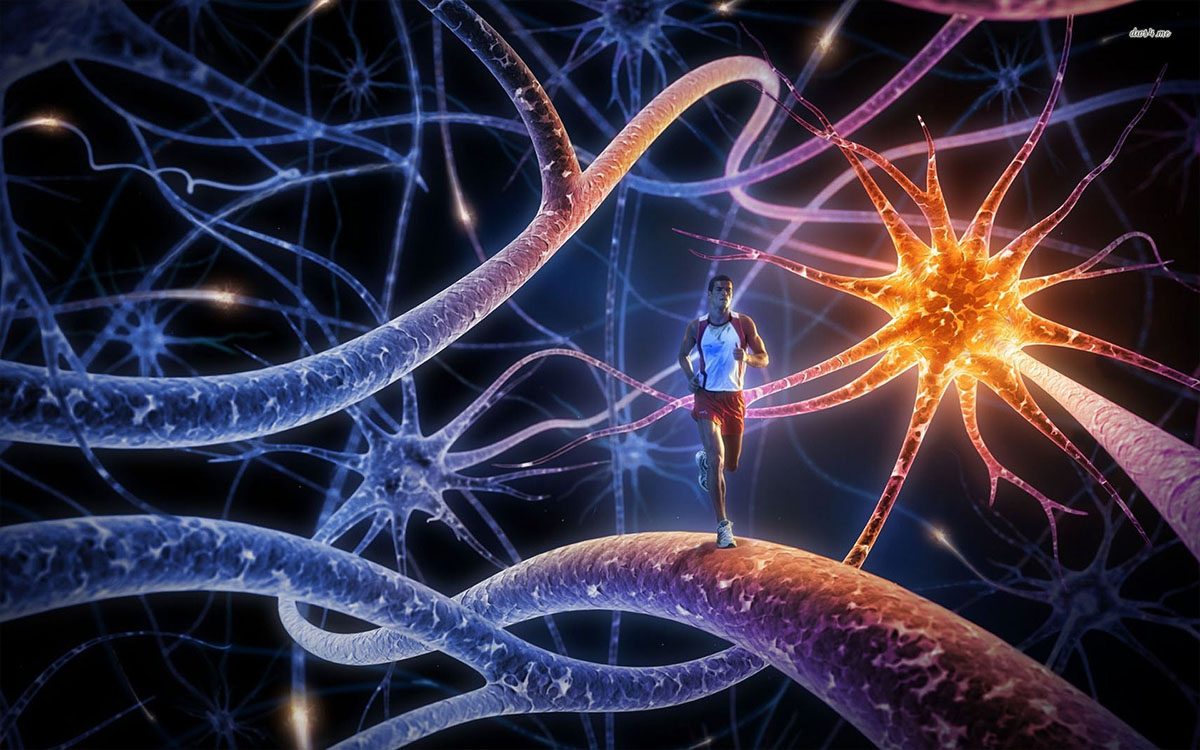how evolution shapes brains and microchips

What do brains and computer chips have in common? Not that much. Sure both use electricity, but in neurons the origin of electrical pulses is chemical while for computer chips it comes from electrical currents. Neurons are highly plastic, rearranging their connections to adapt to new information while computer chips are locked in their arrangement for their entire existence. But one thing they do share is the pattern of connections in their overall structure, specifically both brains and computer chips use the shortest and most efficient pathway they can to avoid the costs associated with taking long detours for the signals to get to their destination. Evolution and chip designers seemed to have reached the same conclusions when bumping up against the same very basic and very important limits, says a recent research paper from a small international team in PLoS.
After examining the brain structures of humans, extremely well understood laboratory nematodes, and some run of the mill computer chips, they noticed that two very interesting things about both as noted in a write-up of the study by Science Daily…
First, the human brain, the nematode’s nervous system, and the computer chip all had a Russian doll- like architecture, with the same patterns repeating over and over again at different scales. Second, all three showed what is known as Rent’s scaling, a rule used to describe relationships between the number of elements in a given area and the number of links between them.
The first finding confirms the research being done on intelligence and cognition in insects and mammals. A brain doesn’t necessarily evolve new structures as it increases in size. Instead, we see a repetition of basic patterns and more intricate interactions between them. The current idea is that larger animals evolve a larger brain to control their bigger bodies and whatever cognition they get out of that is a positive side-effect. When it comes to humans, our brain has grown in part because of a crucial set of mutations and natural selection’s emphasis on outwitting predators in the environment where we evolved. In other words, our brain is more of a scaled up, over-clocked version of what many mammals already have. Again, this fits quite well with what we would expect to see for a nervous system which evolved over millions of years of selective pressures favoring higher intelligence and abstractions like strategy, memory and creativity.
The second finding also seems to confirm something we know about evolution, mainly that natural selection tends to trim down waste and excess if it can and over a long period of trial and error, it will eventually arrive at efficient solutions to basic problems. We can see this in how DNA is packaged in our cells and now, how our nervous systems end up supporting the shortest plausible signal pathways to run our brains more efficiently. If it didn’t, our nervous systems would be too expensive to run and fewer of us would’ve survived our feral days in the plains and deserts of Africa and the Middle East. Of course this shouldn’t be taken to mean that we run at peak efficiency, especially since many signals in the brain misfire on a routine basis and not every pathway is necessarily optimized to the level of a microchip. The authors also stressed that they were working with too few nervous scans to pin down just how close the relationships between brains and chips really are, so while their initial findings are both promising and seem to make sense, this is an area of research which needs to be continued and expanded in the near future, hopefully with much greater sample sizes.
See: Bassett, D., et al. (2010). Efficient Physical Embedding of Topologically Complex Information Processing Networks in Brains and Computer Circuits PLoS Comp. Biology, 6 (4) DOI: 10.1371/journal.pcbi.1000748





